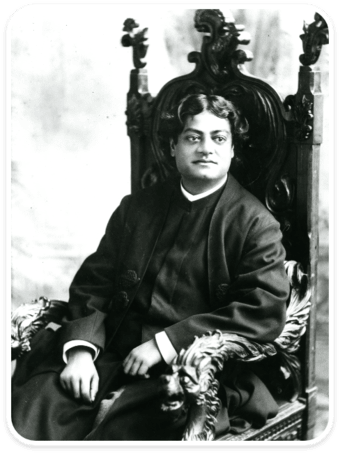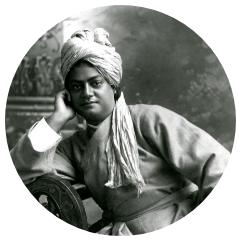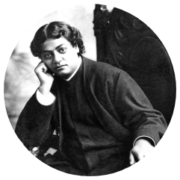Swami Vivekananda


Sri Ramakrishna’s chief disciple, Swami Vivekananda (1863-1902), organized the Ramakrishna Order of monks in India and brought Vedanta to the West in the 1890s. The great swami emphasized that, while man can know God in various forms, his ultimate goal is to realize his identity with the Supreme Reality. He taught that all the yogas could be harmoniously combined—that Freedom can be attained “by work, or worship, or psychic control, or philosophy, by one, or more, or all of these.”
Further, the swami gave cardinal importance to three teachings as most appropriate to, and most needed by the modern world: one’s highest achievement and greatest happiness lie in fully manifesting his or her own divinity; one’s clearest vision lies in the perception of divinity everywhere; one’s truest worship is the selfless service of his fellowman, for his fellowman is, in reality, God Himself.
swamivivekanada

- Swami Vivekananda (1863-1902)
Journal Articles on Swami Vivekananda
These journal articles explore Swami Vivekananda’s introduction of yoga to the Western world and the impact that it has had over the last hundred years.
Vedanta in America: Where We’ve Been and Where We Are by Pravrajika Vrajaprana
Vivekananda: The Common Thread Tolstoy, Salinger Bernhardt
Swami Vivekananda, the Yoga Missionary
“Do All Religions Teach the Same Truth?”













